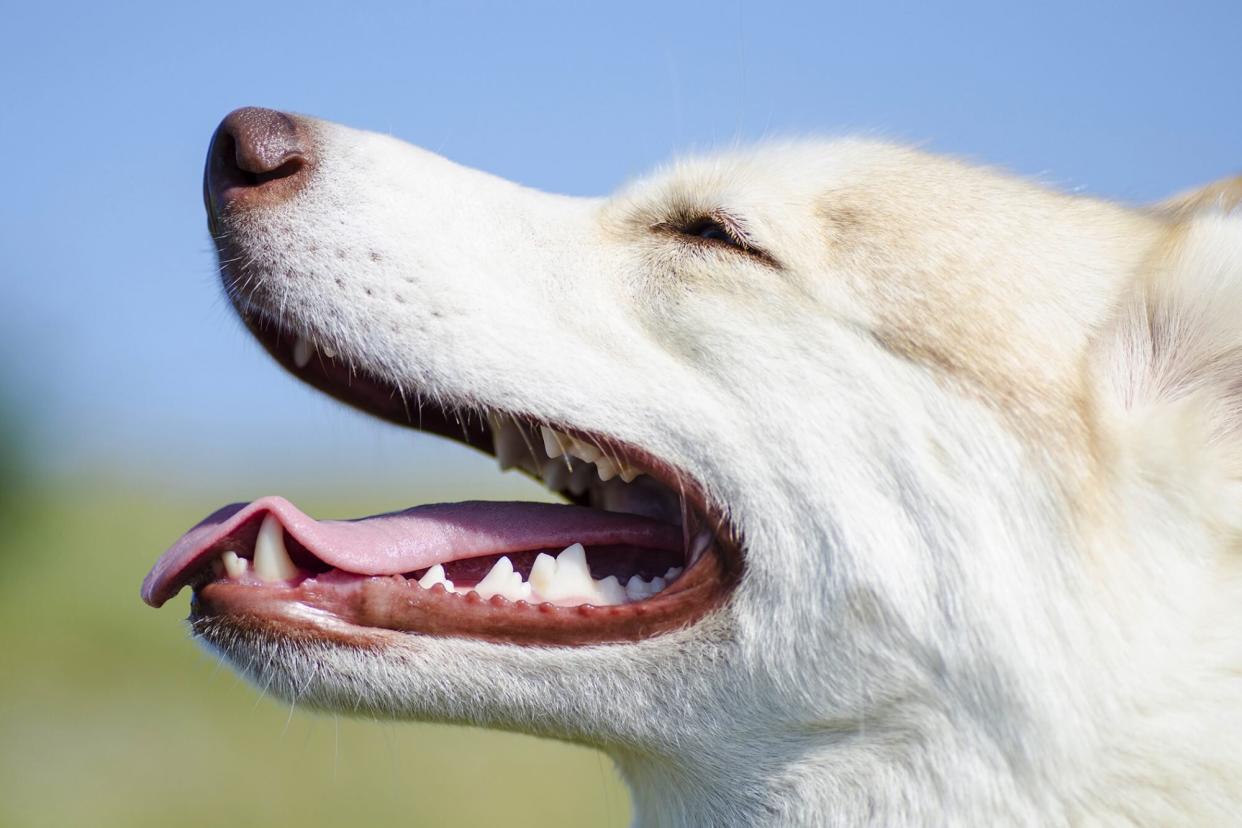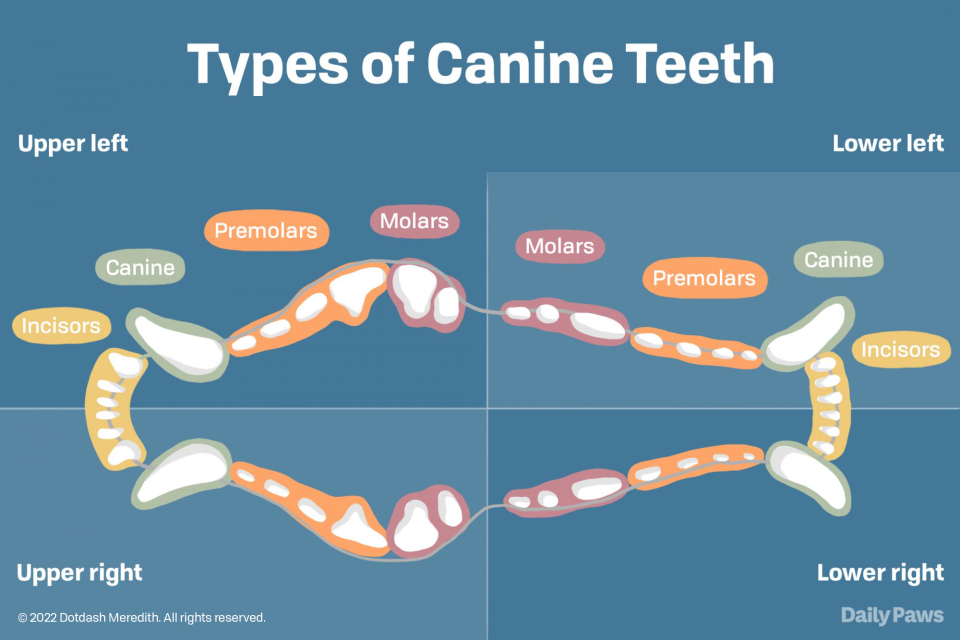How Many Teeth Do Dogs Have? Here's Your Guide

kseniya_mitus / Adobe Stock
When a puppy pierces your toes with his little needle teeth (ouch!) or your full-grown pooch will not let go of the tug rope toy, it's natural to wonder how many teeth dogs have. More than humans do, actually! Each set of dog teeth has a specific purpose.
Types of Canine Teeth
A fun factoid to help you win at trivia: humans and dogs have the same types of teeth. And like us, dogs develop two sets of teeth—juvenile and adult—and use them for similar eating functions, too. However, dogs' teeth have an extra "Grrrrr…" factor. Here's how they work.
Incisors
What's the first part of your dog's smile? The incisors! These are the small teeth directly in front on both the upper (or maxillary) and lower (or mandibular) part of his jaw. He uses them for scraping at bits of meat and grooming his coat.
Canines
Behind the incisors are the canines, or "fangs". There's a pair of long, pointed, and extra sharp teeth both above and below. Canine teeth tear into meat, hold on to things, and are part of a snarl. If a dog you don't know bares his canines into this type of snarl and his tail isn't wagging, it's a warning. But your pet might wriggle his hind end and lift his lips into a big ol' goofy canine grin while playing.
Pre-Molars
On either side of a dog's jaw on both the top and bottom are wide pre-molars, or carnassials. A lot of shredding and chewing happens in this space, which is why they're relatively sharp.
Molars
At the very back of a dog's mouth, above and below, are flat molars. He uses these to crunch on hard things, such as biscuits or kibble.

Yeji Kim
Wondering what the biggest difference is between human teeth and dog teeth? Brenda L. Mulherin, DVM, Diplomate AVDC, board certified veterinary dentist and clinical professor at the Lloyd Veterinary Medical Center at Iowa State University, says it comes down to one distinct thing: "Dog teeth have significantly less enamel than humans: roughly 0.1–1 millimeter for dogs, and up to 2.5 millimeters for humans." So while enamel may be as hard as bone, the right chew toys can help to keep it from eroding and prevent additional tooth damage.
How Many Teeth Do Puppies Have When They're Born?
Mulherin says that technically, puppies have no visible teeth at birth. "They begin the eruption process at about 3 weeks of age." That's when you'll see deciduous teeth start to come in—also referred to as milk or needle teeth.
A puppy develops 28 teeth in 3–12 weeks:
12 incisors
4 canines
12 pre-molars
Even though his molars aren't in yet, it's never too early to start proper puppy dental care with help from your veterinarian, especially as your little furbaby learns how to use his chompers.
RELATED: How to Keep Your Dog's Teeth Clean
When Do Puppies Start Losing Their Baby Teeth?
Unlike human baby teeth, which can take years to transition to permanent versions, puppy teeth appear rather quickly due to a dog's maturation. "Incisors are usually the first teeth to exfoliate at 3–4 months, followed by canine teeth at 4–6 months, and pre-molars at 4–6 months," Mulherin says. "The rule of thumb is that no two teeth trying to occupy the same space should be in the oral cavity at the same time."
So if it seems as though your pup is gnawing on the furniture, your shoes, and everything else around them for months on end, this rapid progression is why! Proper toys will provide him a great outlet for chewing during this time.
How Many Permanent Teeth Do Adult Dogs Have?
Molars, which are the final set of teeth that appear in your dog's mouth, should start to come in by the time he's 5–7 months old. That brings the total number of teeth dogs have in adulthood to 42:
12 incisors
4 canines
16 pre-molars
10 molars
That's 10 more than adult humans!
Mulherin says there's no difference between how many teeth small dogs have compared to large dogs. "Whether they are 3 pounds or 130 pounds, they should all have the same number of teeth, regardless of the size or breed," Mulherin says. "But genetically some have less, some have more, some only partially erupt, and some are unerupted."
Mulherin notes that by the time they're 3 years old, more than 80 percent of dogs have some type of periodontal condition, including gingivitis or attachment loss. This means your dog's teeth need to be brushed regularly to prevent dental disease. If you notice that your pooch seems to have trouble chewing or you have other concerns about their teeth or mouth (including bad breath!), talk to your vet to find the right course of action to keep those chompers healthy.

